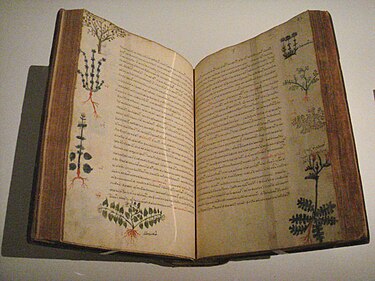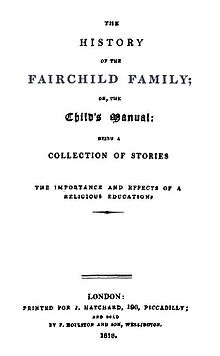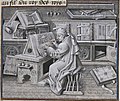The Books Portal

A book is a medium for recording information in the form of writing or images. Books are typically composed of many pages, bound together and protected by a cover. Modern bound books were preceded by many other written mediums, such as the codex and the scroll. The book publishing process is the series of steps involved in their creation and dissemination.
As a conceptual object, a book typically refers to a written work of substantial length, which may be distributed either physically or in digital forms like ebooks. These works are broadly classified into fiction (containing imaginary content) and non-fiction (containing content representing truths). Many smaller categories exist within these, such as children's literature meant to match the reading level and interests of children, or reference works that gather collections of non-fiction. Books are traded at both regular stores and specialized bookstores, and people can borrow them from libraries. The reception of books has led to a number of social consequences, including censorship.
A physical book does not need to contain written works: for example, it may contain only drawings, engravings, photographs, puzzles, or removable content like paper dolls. Physical books may be left empty to be used for writing or drawing, such as account books, appointment books, autograph books, notebooks, diaries and sketchbooks.
The contemporary book industry has seen several major changes due to new technologies. In some markets, the sale of printed books has decreased due to the increased use of eBooks. However, printed books still largely outsell eBooks, and many people have a preference for print. The 21st century has also seen a rapid rise in the popularity of audiobooks, which are recordings of books being read aloud. Additionally, awareness of the needs of people who can't access print media due to limitations like visual impairment has led to a rise in formats designed for greater accessibility, such as braille printing or formats supporting text-to-voice. Google Books estimated that as of 2010, approximately 130,000,000 unique books had been published. (Full article...)
Featured articles -
Selected picture

Credit: Diliff
More Did you know (auto generated)

- ... that Dark Archives reveals that most books bound in human skin were made by respected doctors?
- ... that the librarian Paul Needham has argued for the "respectful burial of the human remains" included in a book bound in human skin?
- ... that nine-year-old Muskan Ahirwar started a library for the children in her slum that now contains more than 3,000 books?
- ... that the doll company American Girl published The Care and Keeping of You, a book explaining puberty, after receiving thousands of letters from children asking about it?
- ... that children's book illustration techniques include photography?
- ... that a spokesperson for the American Library Association told ABC News in late 2021 that she had "never seen such a widespread effort to remove books on racial and gender diversity"?
Books topics
Related portals
Selected quote
Did you know

- ...that Library of Alexandria was once the largest library in the world?(Pictured)
- ...that the government of Bavaria, in agreement with the federal government of Germany, does not allow any copying or printing of Mein Kampf in Germany?
- ...that among the books that end up in the Simpson's fireplace in episode Dog of Death are The Lottery by Shirley Jackson, Fahrenheit 451 by Ray Bradbury (which ironically enough, is about a society where books are burned),and Fatherhood by Bill Cosby?
General images
Books lists
WikiProjects
Categories
Things you can do

- Find news articles regarding notable books and add them to the "In the news" section.
- Expand this portal and book-related articles: List of Jamaican books
- Create new articles: Lists of books provides a comprehensive list of notable books, many of which have no articles.
- Add references: List of CEO books, List of anonymously published works
- Make this portal more complete:
- Add ((WPBooks)) to the Talk pages of articles about notable books – but try to add an initial Assessment from the Wikipedia:WikiProject_Books
- Add
((Portal|Books))to appropriate articles within the subject
- Anything else you can think of doing.
Web resources
- Bookbinding and the Conservation of books, A Dictionary of Descriptive Terminology, 1982 by Matt T. Roberts and Don Etherington
- IOBA glossary of book terms
- Project Gutenberg - Free e-Books
- Words at Large: The best in books from CBC.ca
- please add more!
Associated Wikimedia
The following Wikimedia Foundation sister projects provide more on this subject:
-
Commons
Free media repository -
Wikibooks
Free textbooks and manuals -
Wikidata
Free knowledge base -
Wikinews
Free-content news -
Wikiquote
Collection of quotations -
Wikisource
Free-content library -
Wikispecies
Directory of species -
Wikiversity
Free learning tools -
Wikivoyage
Free travel guide -
Wiktionary
Dictionary and thesaurus







































































